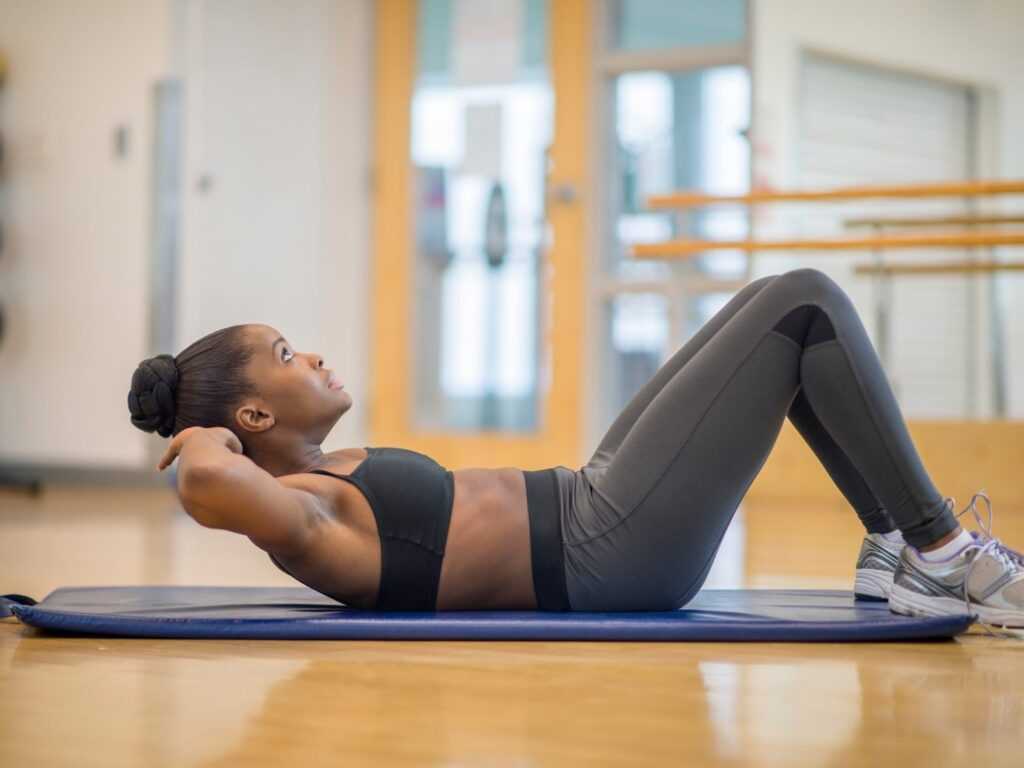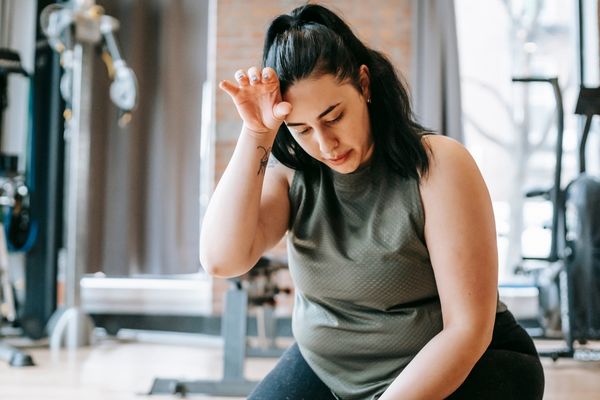One of the most discussed topics in the world of fitness today is whether crunches or sit ups are to be done or not. Being a favorite exercise of a number of beginners and pro athletes alike, this age-old movement is under attack from various sources.

On one hand we have ardent supporters of these movements who no matter what, will protect it from the anti-crunch bandwagon. Also, various sports scientists and strength and conditioning specialists claim it to be the leading cause of low back pain in the gyms as continues spinal flexion according to them should be avoided totally.
However, it is not entirely true as it was seen that certain amount of spinal flexion is actually good for the spine. When some of the world’s leading specialists in the field of sports collected evidence on the research of the ill effects of spinal flexion, they found out numerous gaps.
Acc. to the extensive review study:
- Most of the experiments on spinal flexion in earlier studies were done on pig cervical spine which altered the spinal biomechanics to a greater degree.
- Non-living spines do not function as the living spines and have smaller flexion and extension range of motion.
- Most of the people do crunches in limited number of sets twice or thrice a week which gives ample time to the discs to repair themselves. However, in studies the number of spinal flexions done to cause damage to the spine was humanly impossible. Just like the muscles repair itself after a workout in a stronger form, limited amount of flexion strengthens the disc tissues.
- In earlier studies it was shown that crunches involved 30deg of total trunk flexion that too in the motion occurring in the thoracic spine not lumbar spine.
- Also, spinal flexion is needed and forms a major part of many sport movements and will lead to increased performance.
- It is also important to note that spinal tissue in living humans adapts to the stress of progressive exercise by getting stronger and, thus, is able to withstand greater applied stressors over time
As per the researchers in the above study, scientists claim that human spine has limited number of flexion cycles in a lifetime. However, there are number of top athletes in numerous sports who do thousands of crunches and sit-ups a day.
Researchers found over 50 studies which claimed that either flexion, extension, rotation or combination of spinal loading like lateral bending and flexion, spinal rotation, lateral bending etc. are all bad in one study or the other. Which simply means that you can’t do any exercise which involves fee weights ever.
In fact, a beginner can really benefit from limited number of crunches and sit ups. However, the problem comes is when you over do things like just crunches or sit-ups for the majority of the time in your workouts. But then that is true for almost every exercise.
Your daily workout involves all movements of spine e.g. carrying heavy loads involves trunk extension, waking up in the morning and getting up requires trunk flexion, throwing a ball requires trunk rotation and many more such daily routine movements require trunk flexibility. So, exercises like wood chops, squats, deadlifts, superman etc. are all to be done, but you should know the limits.
There is an evidence of truth in the fact that sit-ups and crunches lead to poor posture specially in people who are having a desk bound job. They have a continuously flexed spine throughout the day, even while driving a car or eating meals. Going to the gym and doing more flexion exercises, and not balancing with other forms of strength training, can ultimately lead to postural problems, like upper cross syndrome or drooped posture.

The abdominal muscle (rectus abdominis) has its origin at the base of the rib cage and its end (insertion) at the pubic bone. When the abdominal muscles contract in a crunch/sit up it brings the rib cage and pelvis together and get back to original position when you elongate it. The main purpose of the muscles in your mid-section is to hold your spine upright. Though eccentric motion of the crunch gets the spine back to the original posture, but when the “C” posture due to prolonged sitting is combined with excessive crunches and sit ups, it then leads to ruining of posture and back pains.
Abdominal loading as done in sit ups and crunches does lead to muscle hypertrophy but the visible six packs is dependent on the fat percentage not on the hypertrophy. Doing more and more crunches & sit-ups won’t give you six packs.
When your body fat percentage decreases below a certain level (app. 14%) your abdominal muscles will be visible for which there are much better and powerful exercises than sit ups and crunches. People with low back pain and other spinal injuries should definitely stay away from sit ups and crunches.
Another reason why crunches are not bad as they are termed to be is because of the putrid method in which they are performed by most people. Keeping your hands locked behind the neck and spanking your neck by pulling it from your hands is a sure shot way to an injury and this is what most of us do. Better way would be to keep your hands crossed across your chest and move up by 30deg through the abdominal power slowly and get back to the starting position.
Crunches do not lead to herniation of the discs. When you flex the spine, the inside edges of the spinal discs squeeze together, while the outer edges spread open. If you are lifting heavy weights with a rounded back it can lead to pushing out of the discs also called as “disc herniation”. But that is not the case with crunches in which the flexion forces are not strong enough to cause such an injury. An even safer way would be to keep your chest up while doing sit ups and crunches and not arch your back too much.
As rightly said “worrying about wearing out the spinal discs by moving them is like being worried that you will wear out your teeth by chewing with them”.
Again, contrary to many claims’ isometric exercises (exercises which involves static contraction and no concentric or eccentric movement) are inferior to isotonic exercises (exercises with normal range of motion) to induce hypertrophy. Ideally, a right mix of the two forms would help you in inducing greater strength and hypertrophy in the muscles.
The researchers suggested that, “performance of the crunch may promote greater abdominal muscle hypertrophy compared with static core exercises. Dynamic concentric and eccentric actions have been shown to elicit distinct morphological adaptations at the fibre/fascicle level, including differences in regional specific muscle growth. Eccentric actions seem to be particularly important to the hypertrophic response”.

In totality, crunches and sit-ups are just fine to inculcate in your regular workouts. But, they are highly inferior exercise, when done in isolation. They are not going to do much to your abdominals, both in terms of fat percentage or strength. If you want to overload your core (abdominals are a small part of the entire core), then focus on basic heavy lifts, especially lower body heavy workouts like squats, deadlifts etc. Coaches asking you to perform hundreds of sit-ups and crunches every day are simply wasting your time, and in most cases are clueless about the basics of exercise physiology.
The authors concluded by saying: “no studies to date have been performed to determine whether a cause-effect relationship exists between performance of the crunch and spinal injury. Damage to the vertebral discs from exercise occurs when fatigue failure outpaces the ability of the tissue to effectively remodel, which is predicated on factors that include genetics, the interaction between load and posture, how rapidly the load is increased, and the age and health of the individual. Given the adaptive nature of the discs, a case can be made that performance of the crunch actually has a positive effect on tissue remodelling provided that the exercise is performed in a fashion that does not exceed disc loading capacity.”



